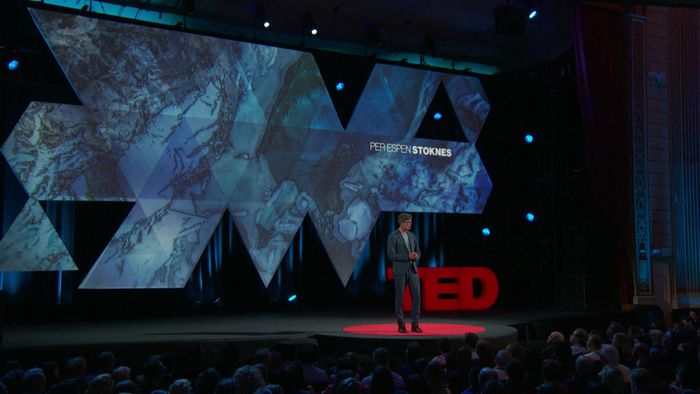Rethinking Lifestyle
The Climate Paradox – Part 2

In a previous article, we discovered five psychological barriers that make it difficult to accept and act on messages about climate change: Distancing, Doom, Dissonance, Denial and iDentity. But in an interview on the podcast “You Are Not So Smart”, psychologist Per Espen Stoknes also described five elements of messaging which can effectively overcome these barriers: Social, Supportive, Simple, Stories, and Signals. Let’s look at how these can work:
Social: People are fundamentally social beings. An issue feels more personal, near and urgent if it’s delivered in a meaningful social context. The Green Sports Alliance for example, has a program for ‘greening’ sports events. Players and fans are influenced by the example of their peers, who they see supporting green initiatives in the familiar context of playing sports. The importance of peer influence was clearly shown in an experiment by Professor Bob Cialdini, who placed hundreds of households into 4 groups. Each group was asked to conserve power using a different message. 1. Do it for the Earth; 2. Do it for future generations; 3. Do it for financial savings; or 4. This is how much you use compared to your neighbours. This last message proved to be by far the most motivational. Cialdini’s experiment shows the power of social norms. If I believe that people in my social group or network will do something, then I will take action too.
Supportive: ‘Supportive’ means employing frames that use supportive associations, rather than frightening ones. Instead of focusing on the cost of climate change, which triggers a negative response, it is more effective to frame the issue in terms of the public’s priorities. When asked, people consistently rank Health, Economy, Education, and Jobs at the top of their list of political concerns. So for example, one can point out that the issue is really about health: Allergies, asthma, heat-related heart attacks, and infectious disease all increase with climate change. Research shows that the health framing consistently increases public support of the issue. Another effective framing is risk prevention. “We don’t really know the world is going to burn up” as Stoknes frames it, “but it is a risk and we should insure ourselves – as we do with defense and fire insurance. … It’s just plain common business sense, it’s prudent.” Yet another powerful frame is ‘opportunity’. New infrastructure, smart cities and roads; these hold a fascination for the public that can be channelled into support for the issues of climate change.
Simple: Finding and making the right decisions can be challenging. If you decide, for example, to make a climate-friendly purchase and find 80 different options that you need to weigh – that is not simple. However, if we’re offered a simple action that we can take to align our actions with a positive self-image, we are motivated to do so. According to Stocknes, simply setting the default of all new printers to double-sided printing would save 15 to 20% in paper – equivalent to taking 150,000 cars off the road if applied in the US. Or simply by redesigning the price label of appliances to list the life-cycle cost in a larger font than the purchase price, a Norwegian study showed people would purchase appliances that consume, on average, 5% less power. In the EU, this would be equivalent to 2 million cars taken off the road. Bad decisions are already the default in many cases. But by building good decisions into our “choice architecture”, the public can be freed to make those decisions easily.
Stories: People make sense of the world by creating an internal narrative to describe it. A change in that narrative can only happen if we are presented an alternative narrative – one in which the old stories are replaced with new ones. For example, a narrative in which the dirty growth of the past is replaced by a revolution in resource efficiency speaks strongly to business leaders and those who are focused on opportunities. Religious individuals or those engaged with moral issues can relate to a narrative that emphasizes stewardship, rather than the old story of dominance over nature. Other stories, declare that the old model of growth hasn’t made us any happier and doesn’t cut it anymore. These stories can give us a description of the world we want to live in, are very important to create a sense of meaning and community. Such narratives have the power to relieve the tension that causes resistance, and motivate us for action.
Signals: It is important to have a mechanism to gauge the direction we’re heading. Are we making progress, or are we going in the wrong direction? Signals like PPM of CO2 in the atmosphere have little meaning and are impossible to see. So the focus should be placed at the individual, company, or city level where effects can be understood. Stocknes cites the example of a Norwegian bank which issues a CO2 statement that shows the impact of your purchases in terms of climate emissions. Another example is an indicator that reports a company’s gross profits in comparison with emissions, or ‘carbon intensity’. Signals like these create an environment of feedback that reinforces positive action in tangible ways.
Dr. Stocknes’ work reveals that current messaging from scientists around climate change is ineffective, and even counterproductive. Through his research, he has identified several tools that communicators – and all of us – can use to better understand our own behaviour as others’. Read his ideas or check out his TED Talk online, and let’s get going!




